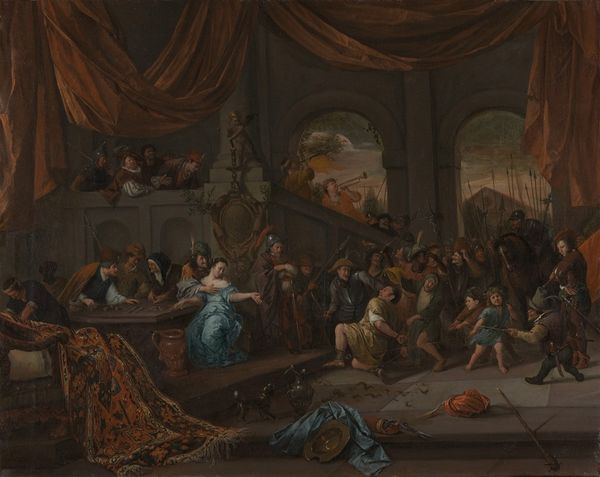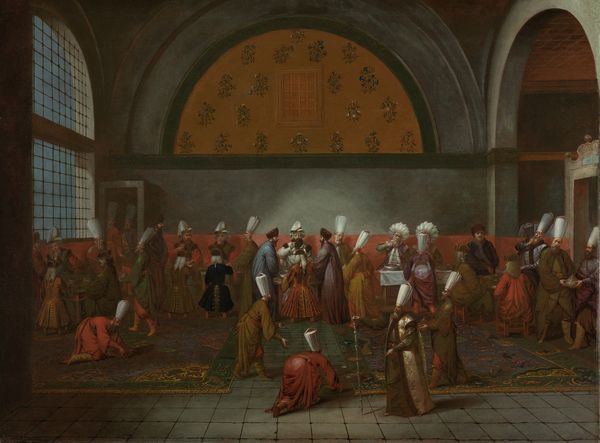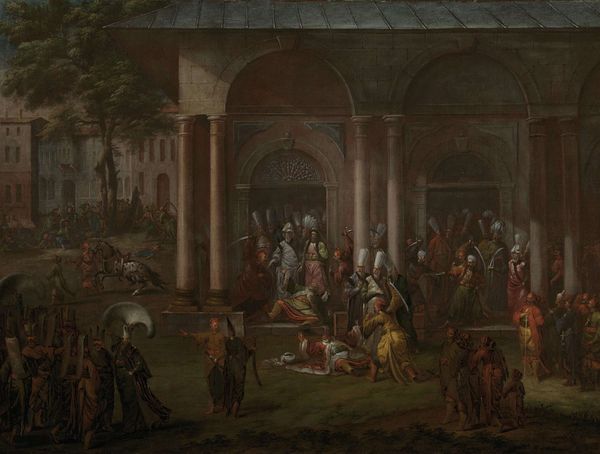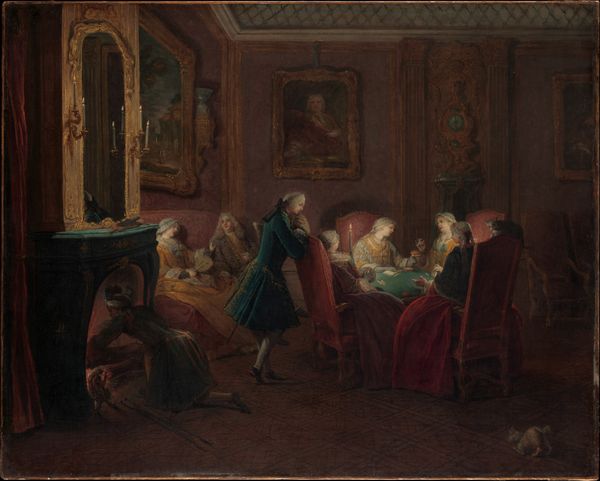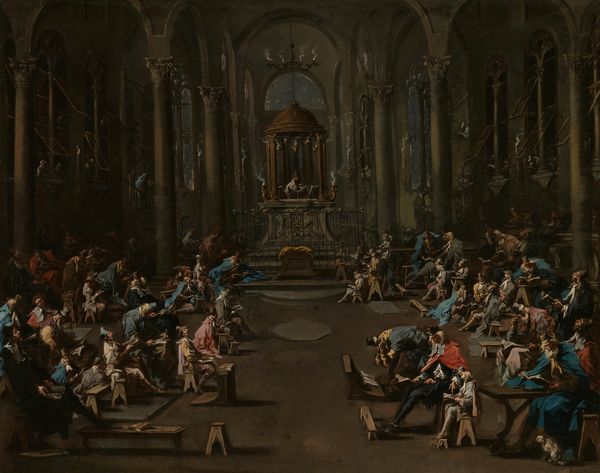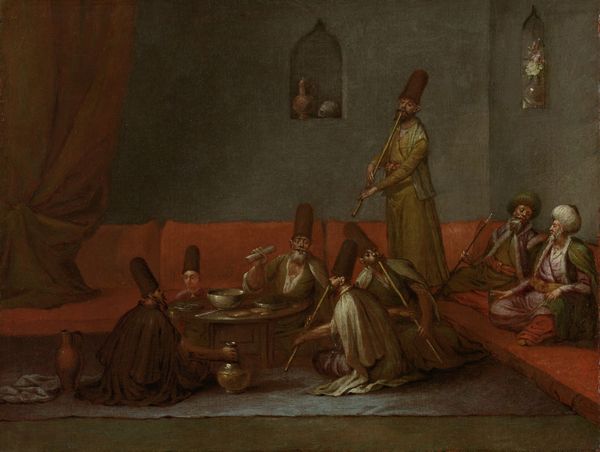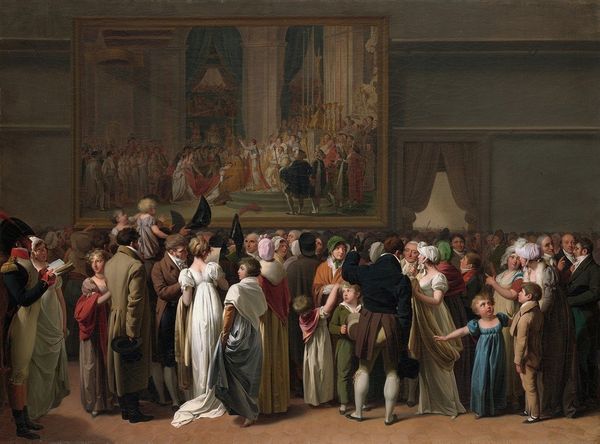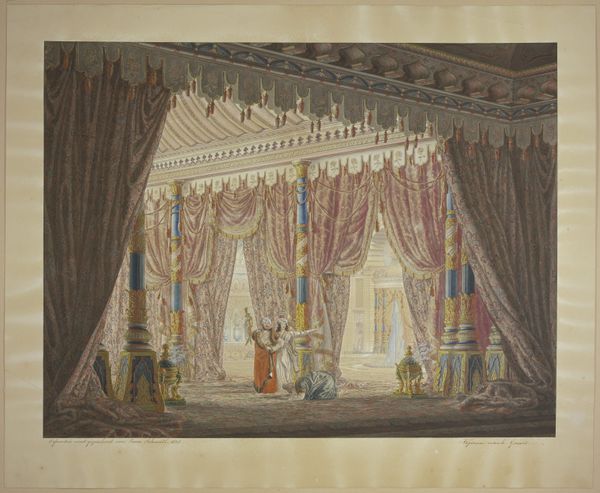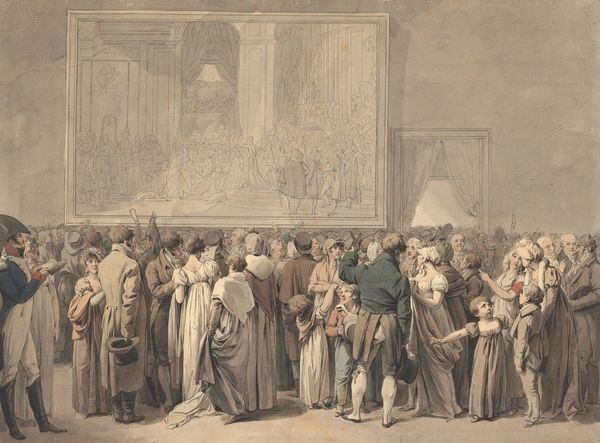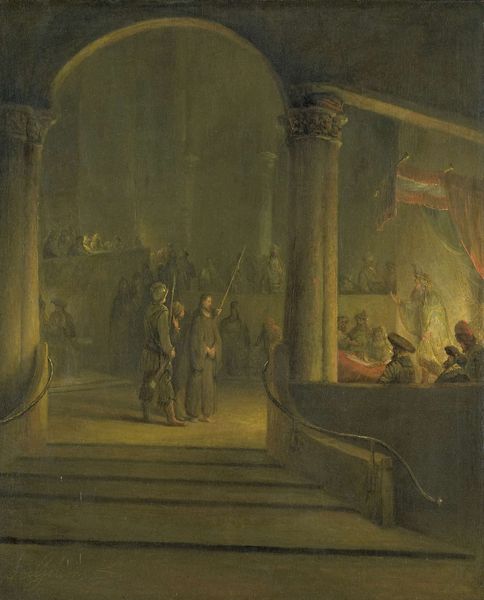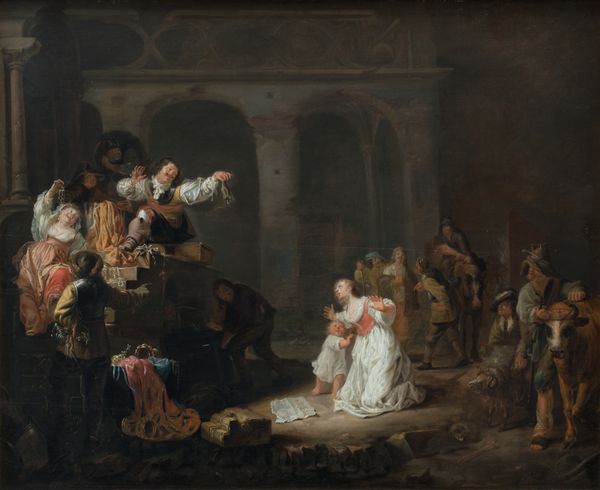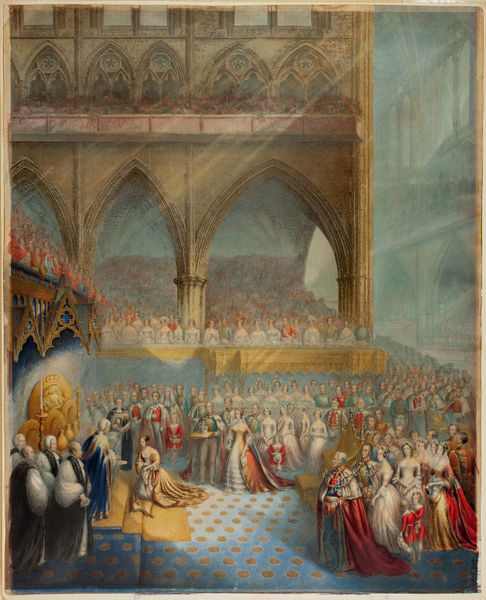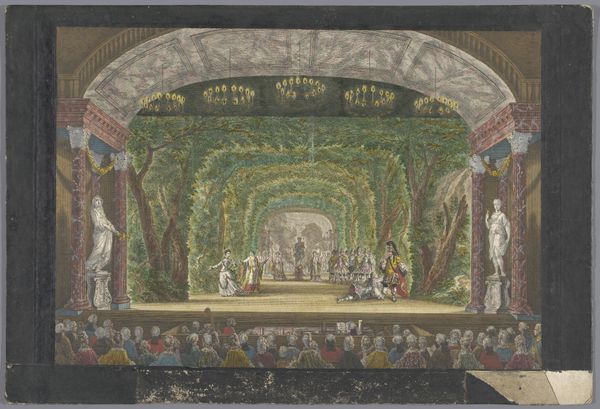
painting, oil-paint
#
baroque
#
painting
#
oil-paint
#
orientalism
#
genre-painting
#
history-painting
Dimensions: height 76 cm, width 101 cm, weight 7.2 kg
Copyright: Rijks Museum: Open Domain
Editor: Here we have Jean Baptiste Vanmour's oil painting, *Whirling Dervishes*, created sometime between 1720 and 1737. There’s something about the circular composition that's so captivating, almost dizzying! How do you interpret this work from a formalist perspective? Curator: Indeed, the circularity is paramount. Consider how the artist employs a cyclical motif, not only through the figures' whirling motions but also in the architecture itself – the domed ceiling, the circular layout of the room. Note the masterful rendering of light as it descends from the dome, illuminating the figures at the painting's center while the edges remain cloaked in shadow, effectively heightening the spectacle. The interplay of light and shadow further accentuates the texture of the whirling garments. Do you perceive any symbolic value in the color choices? Editor: I hadn't really considered it! Perhaps the greens and whites of the dervishes' robes could signify something, contrasting against the darker reds and browns of the room itself. Curator: Precisely. Color operates as a signifier of meaning within this closed system of representation. Furthermore, consider the composition. It divides into clear horizontal bands – the dervishes in the center, the spectators above, and those seated below, which can also be interpreted as social structure as related to architecture. How do the linear elements contribute to the painting's overall impact? Editor: I see what you mean. The vertical lines of the columns contrast with the dynamism of the whirling figures. Maybe that reinforces the controlled environment of the ceremony. Curator: A valid observation. This tension between the static and the dynamic is crucial. This careful manipulation of form, color, and composition invites a closer inspection of the painterly surface itself. This creates an introspective look at the intrinsic values of the work itself. Editor: I see so many more details now than I did at first glance, especially how Vanmour uses those formal elements to guide the viewer’s eye. Curator: Yes, indeed. Art appreciation involves close examination and it often requires more than only looking at a work; it requires truly *seeing*.
Comments
rijksmuseum almost 2 years ago
⋮
Dervishes occupied a special place in religiously tolerant Istanbul. Through prayer, music and ecstatic dance, they tried to enter into a trance and thus come into contact with Allah. Twice a week they performed this dance ceremony, which visitors were allowed to watch. Vanmour must have regularly sat in the gallery to study the whirling of the dervishes.
Join the conversation
Join millions of artists and users on Artera today and experience the ultimate creative platform.
